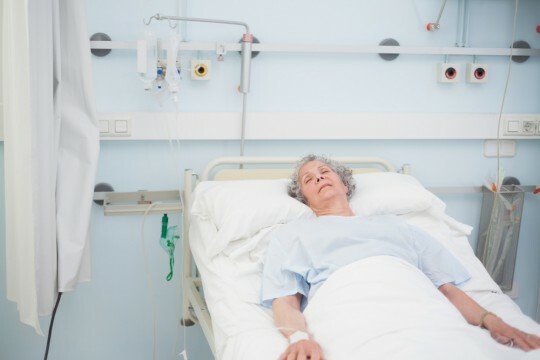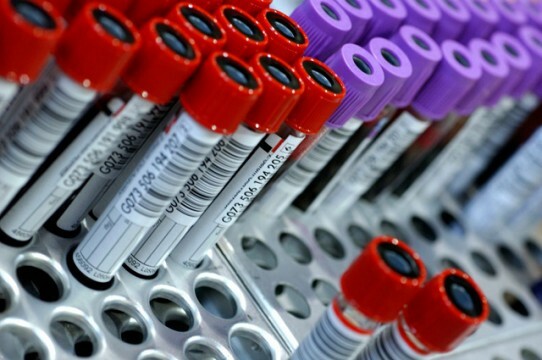Diabetes mellitus is a disease of the 21st century. More and more people learn about the presence of this terrible disease. However, a person can live well with this disease, the main thing is to comply with all the prescriptions of doctors.
Unfortunately, in severe cases with diabetes mellitus, a person may experience a hyperosmolar coma.
What's this?

Hyperosmolar coma is a complication in diabetes mellitus, in which a serious metabolic disorder occurs. This condition is characterized by the following:
- hyperglycemia - a sharp and strong increase in blood glucose;
- Hypernatremia - increased levels of sodium in the blood plasma;
- hyperosmolarity - increase of blood plasma osmolarity, i.e. sum of the concentrations of all active particles per 1 liter.blood is much higher than the normal value( from 330 to 500 mosmol / L at a rate of 280-300 mosmol / l) ;
- dehydration is the dehydration of cells, which occurs as a result of the fact that the liquid tends to the intercellular space to lower the level of sodium and glucose. It occurs throughout the body, even in the brain;
- absence of ketoacidosis - blood acidity does not increase.
Hyperosmolar coma most often occurs in people over 50 years of age and accounts for approximately 10% of all types of coma in diabetes mellitus. If you do not help the person in this state of emergency, then this can lead to death.
Reasons for
There are a number of reasons that can lead to this type of coma. Here are some of them:
- Dehydration of the organism of the patient. This can be vomiting, diarrhea, a decrease in the amount of fluid consumed, a long intake of diuretics. Burns of a large surface of the body, disturbances in the work of the kidneys;
- Lack or general lack of the required amount of insulin ;
- Unrecognized diabetes mellitus. Sometimes people do not even suspect about the presence of this disease in themselves, so it does not heal and does not follow a certain diet. As a result, the body can not cope and a coma may occur;
- Increased need for insulin , for example, when a person breaks a diet by eating foods containing a large amount of carbohydrates. Also, this need may occur for colds, diseases of the genitourinary system of an infectious nature, with long-term use of glucocorticosteroids or drugs, sex hormones being replaced;
- Taking antidepressants;
- Diseases that occur as complications after a major illness;
- Surgical interventions;
- Acute infectious diseases.
Symptoms of
Hyperosmolar coma, like any disease, has its own characteristics, by which it can be recognized. In addition, this condition develops gradually. Therefore, some symptoms in advance predict the occurrence of hyperosmolar coma. The symptoms are as follows:
- A few days before coma, a person has a sharp thirst, a constant dryness in the mouth;
- The skin becomes dry. The same applies to mucous membranes;
- The tone of soft tissues decreases;
- The person constantly has weakness, inhibition. Constantly I want to sleep, which leads to a coma;
- Pressure drops sharply, tachycardia may occur;
- Polyuria develops - increased urine formation ;
- There may be problems with speech, hallucinations;
- Muscle tone may increase, cramps or paralysis may occur, but the tone of the eyeballs, on the contrary, may fall;
- Very rarely, epileptic seizures may occur.
Diagnosis

In blood tests, a specialist determines elevated levels of glucose and osmolality. In this case, ketone bodies are absent.
Diagnosis is also based on visible symptoms. In addition, the age of the patient and the course of his illness are taken into account.
For this , the patient must take tests for the determination of glucose, sodium and potassium in the blood of .Also, urine is given to determine the level of glucose in it. In addition, doctors can prescribe ultrasound and x-ray of the pancreas and its endocrine parts and electrocardiography.
Treatment of
Emergency care for hyperosmolar coma consists, first of all, in eliminating the dehydration of the body. Then it is necessary to restore the osmolarity of the blood and to normalize the glucose level.
A patient who develops a hyperosmolar coma, should be urgently delivered to the intensive care unit .Once the diagnosis is made and treatment is started, the condition of such a patient is under constant control:
- Once a hour, an express blood test is always done;
- Twice a day, the determination of ketone bodies in the blood is made;
- Several times a day, an analysis is made to determine the level of potassium and sodium;
- A couple of times a day, check the acid-base state;
- The amount of urine that is formed in a certain time is constantly monitored until dehydration is eliminated;
- ECG and blood pressure monitoring;
- Every two days there is a general analysis of urine and blood;
- Can do a lung X-ray.
Sodium chloride is used for rehydration. It is administered intravenously with the help of a dropper in certain quantities. Concentration is selected depending on how much sodium is contained in the blood. If the level is high enough, then a solution of glucose is used.
In addition, a dextrose solution is used, which is also imported intravenously.
In addition, patients undergoing hyperosmolar coma are given insulin therapy. Used short-acting insulin, which is administered intravenously.
First-aid first aid

But how to be a man, if his loved one has a hyperosmolar coma quite unexpectedly( it happens when a person does not pay attention to symptoms).
You should act as follows:
- Be sure to ask someone to call a doctor;
- The patient should be well covered or heated with heaters. This is done in order to reduce heat loss;
- It is necessary to control body temperature, respiratory state;
- It is necessary to check the condition of the eyeballs, skin tone;
- Monitor the glucose level;
- If you have experience, then you can put a dropper with saline solution .A minute should pass 60 drops. The volume of the solution is 500ml.
Complications of
Hyperosmolar coma often occurs in people over 50 years of age. Therefore, sometimes there can be certain complications. For example:
- With rapid rehydration and lowering of glucose , cerebral edema may occur;
- Due to the fact that this condition often occurs in already elderly people, it is likely the development of heart problems and the occurrence of pulmonary edema;
- If the glucose level drops very quickly, then a sharp drop in blood pressure is possible;
- The use of potassium can lead to its large content in the body, which can become a threat to human life.
Forecast
Hyperosmolar coma is considered a serious complication of diabetes mellitus. Fatal outcome occurs in approximately 50% of cases of this condition. After all, most often it appears at an age when, apart from diabetes, a person may have many other diseases. And they can cause a serious recovery.
With timely assistance, the prognosis is favorable, the most important is that after exiting this condition, the patient should follow all the doctor's instructions and adhere to a healthy diet and lifestyle in general. And his close people must necessarily know the rules of emergency care, so that if necessary, in time to provide it.



